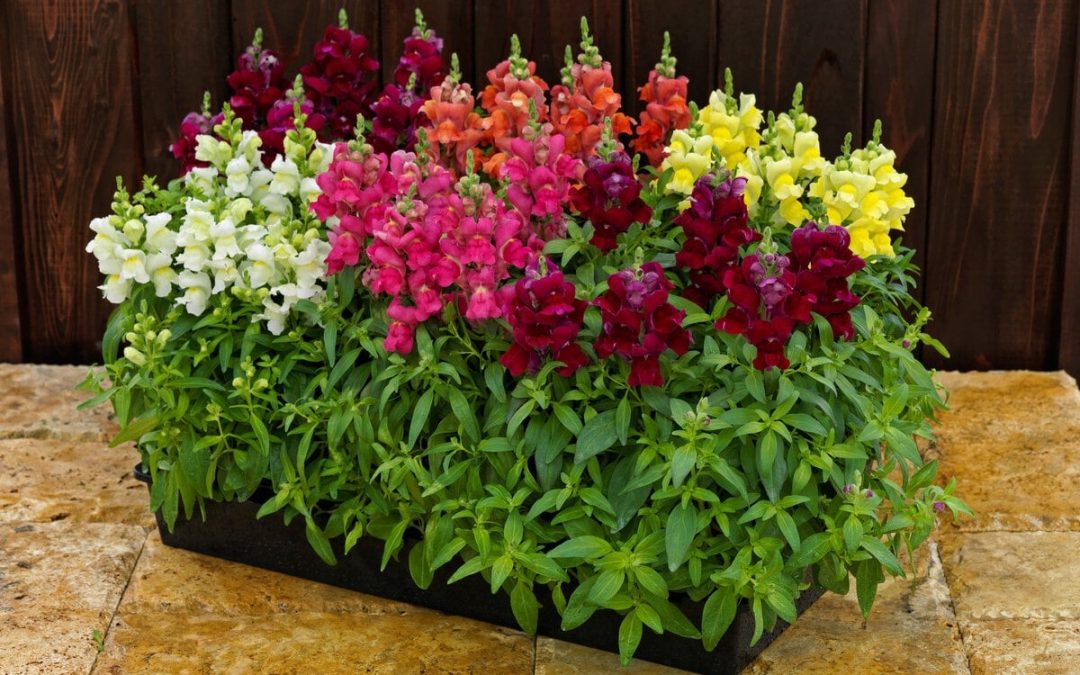Dragon flowers, Antirrhinum majus, also known as snap dragon flowers are beautiful and unusual plants of the Plantain family that will decorate any garden plot.
This flower is native to the Mediterranean. The palette of bright colors of this flower is very diverse – among its inflorescences, you can see shades from cream to crimson and from yellow to bright orange.
The flowers of some varieties of Antirrhinum majus are not only monochromatic but also amazing with a riot of two-color and even three-color colors.
Dragon flowers bloom from the first month of summer until the first frost.
Table of Contents
Description
Dragon flowers are herbaceous bushes, most often pyramidal. they have straight and branched stems that reach a length of about 1 meter.
The most noticeable thing in these flowers is the inflorescence – a large, medium, or small two-lipped corolla, plain or multi-colored.
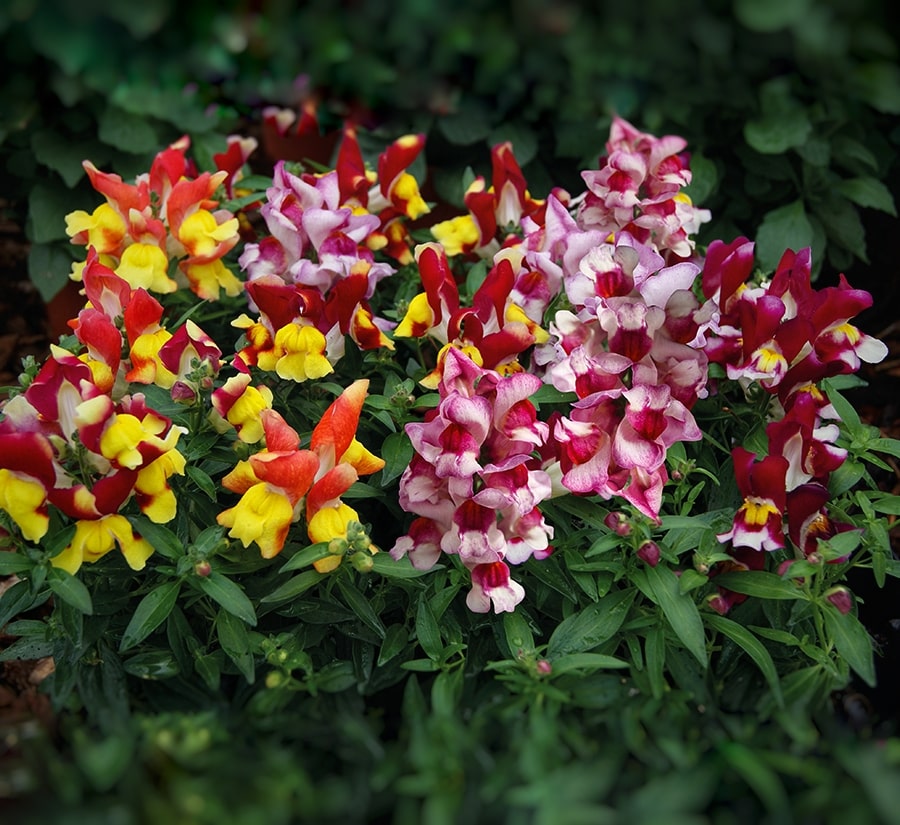
Modern breeders have even managed to develop ampelous flower varieties that look impressive in hanging baskets or balcony containers for green spaces.
It is believed that this garden crop is annual. However, flower growers claim that dragon flowers have strong and frost-resistant roots.
If the flower bush was large and healthy, then it is quite capable of withstanding a relatively mild and frost-free winter in the ground and blooming again next year. To do this, it should be well covered to preserve the roots in the soil until spring.

Flowering bushes are used effectively in garden design. They look bright and original in garden beds; they can be placed in separate groups or complemented by other flowering plants.
When choosing dragon flower seeds, you must take into account that all bushes are divided into the following groups:
- Short – from 15 to 25 cm in height;
- Medium – from 40 to 60 cm;
- Tall – from 80 cm to 1 m.
Dragon Flowers Bloom
Low varieties bloom their buds in the last ten days of June, and higher ones – in mid-July. Dragon flower seeds are usually prepared independently, but it is better to purchase them in flower shops, which have a huge number of different varieties with unusual colors and shapes of inflorescences.
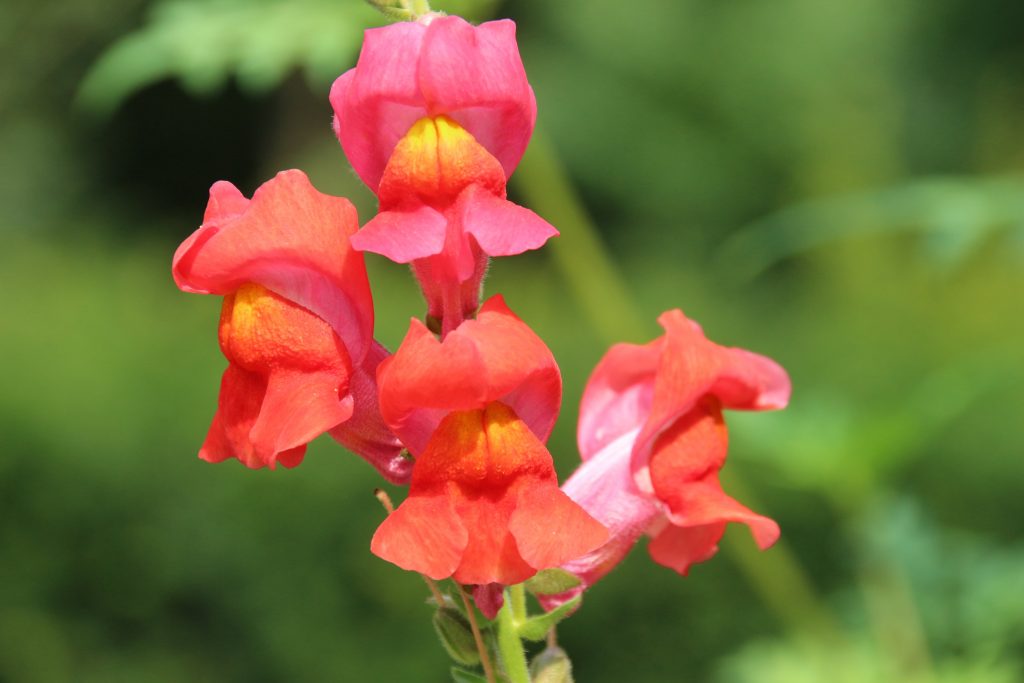
Inflorescences of the dragon flowers begin to fade from below, so as they lose their attractive appearance, they must be removed, otherwise, the flower spends on them the necessary energy that other inflorescences need. Also, for a longer life span of inflorescences, it is recommended not to allow faded flowers to set seeds.
Fertilizer and Watering
It is better to water a bush that grows in open ground in the morning before it gets hot. After watering, it is advisable to loosen the soil and remove unwanted weeds. Dragon flowers growing in containers on the balcony should be watered sparingly as needed. It is advisable to pour water under the root, and not on the leaves of the flower.
As for feeding dragon flower green bushes, they should be done at least 2 times per season. It is recommended to do the first feeding after rooting after transplantation. You can use any organic fertilizers or complex flower feeds.
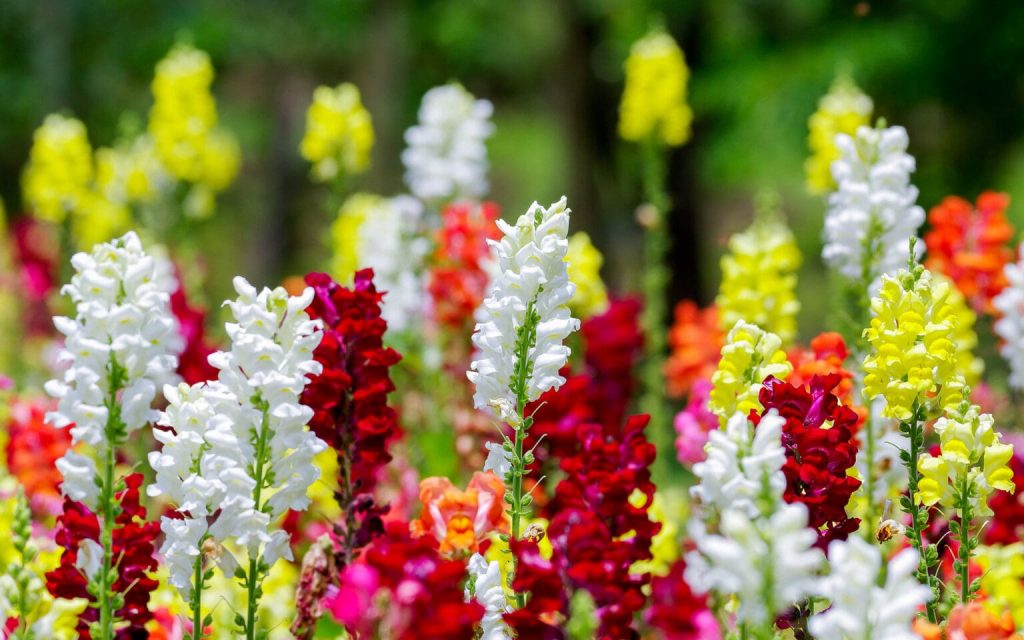
The next fertilizer should be applied during the period when buds appear. To do this, you need to prepare a solution consisting of 1 tablespoon of potassium sulfate, a small volume of urea, and 1 tablespoon of superphosphate, which should be dissolved in 10 liters of water.
The inflorescences also respond positively to regular mulching of the soil.
Propagation of Dragon Flowers By Seeds
40-45 days after the start of flowering, the seeds of the bush ripen. When the seed fruit at the bottom of the stem turns brown, this means that the seeds are ready to be collected. They must be collected from the lower bolls of the peduncle.
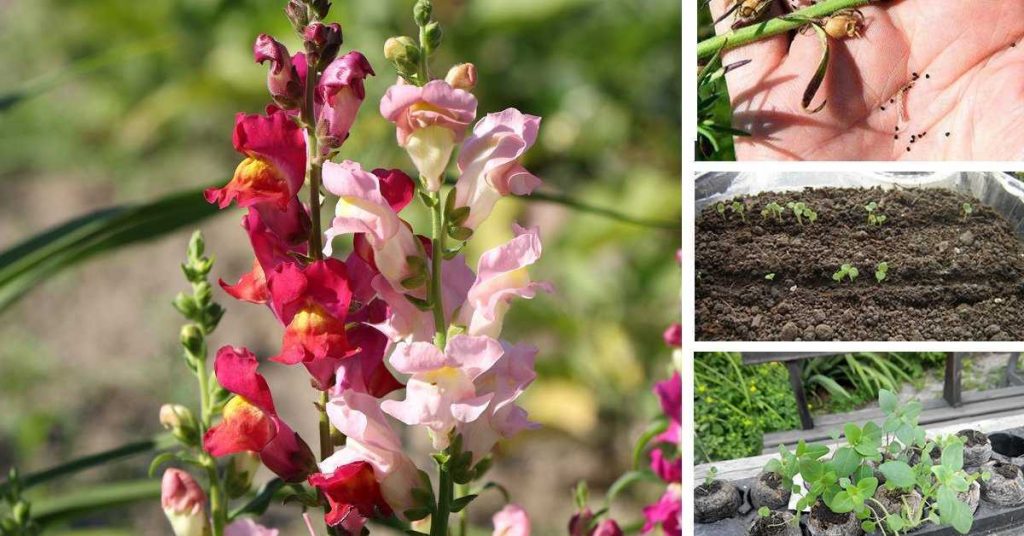
In autumn, the stem is completely cut off, and the top with unripe bolls is cut off separately. The lower stem with seed fruits should be placed in a paper bag, tied with thread, and hung in a dry room. This way the seeds ripen and are poured into the bag. Seeds are ready for planting within 3-4 years.
Tips for Sowing Seeds
The dragon flower growers living in the southern regions can sow seeds directly into the soil in the spring. Sprouts appear 15 – 20 days after planting. They are persistent and tolerate slight night and morning cold snaps well.
In regions where spring does not come so early, it is better to use seedlings. This is a simple and reliable way to get healthy and numerous seedlings.
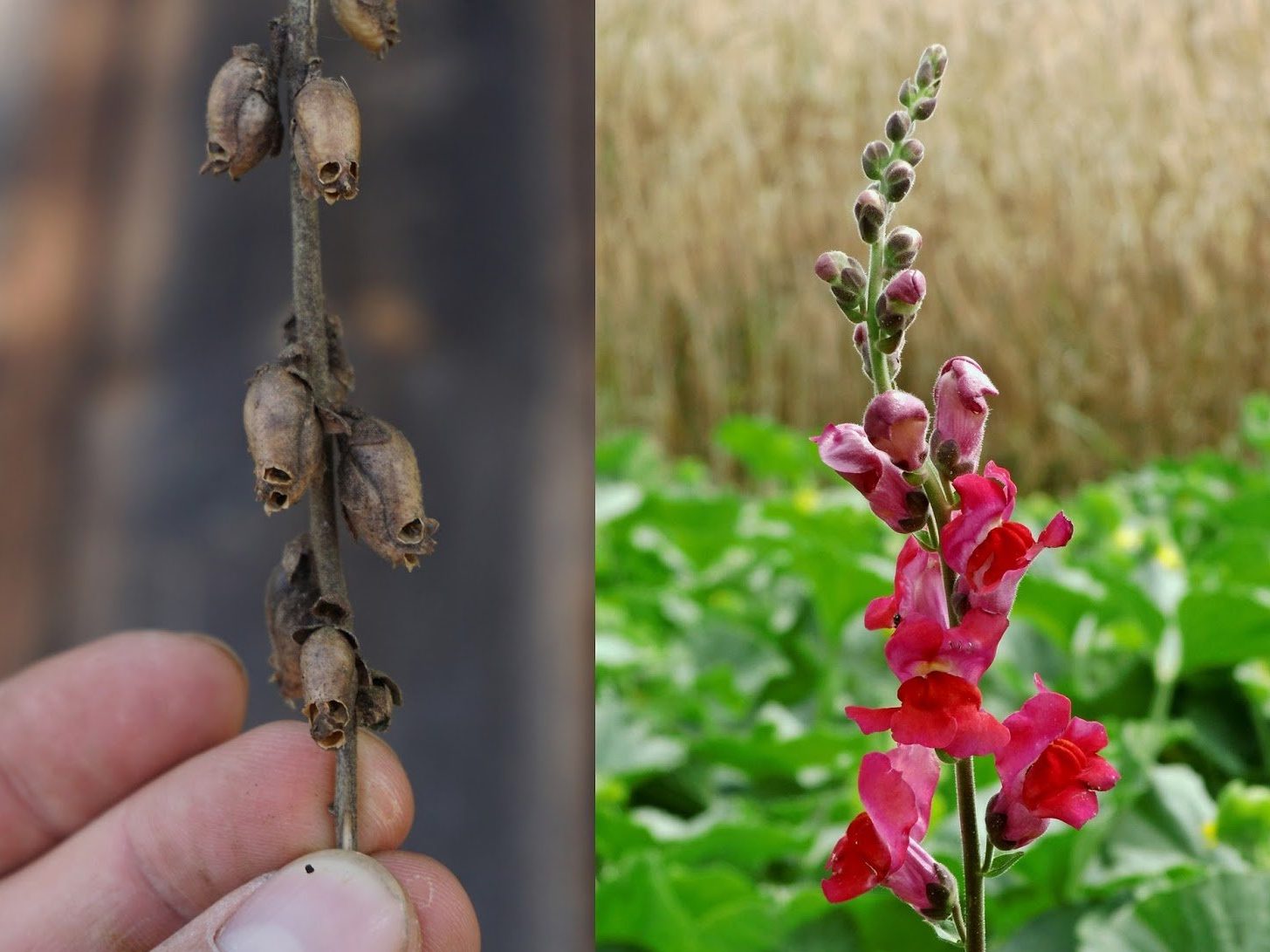
It is recommended to start growing dragon flowers from seedlings in early March. The flower seeds are small, so for a more even distribution in the soil, they must be mixed with coarse dry sand. For planting, you need to prepare special boxes with drainage holes.
A small layer of expanded clay is placed at the bottom of the container, sand is poured on top, and then a little compost soil, which can also be mixed with sand. The soil should be well moistened with a spray bottle and the seeds should be carefully placed in it.
Next, sprinkle the planting material with a thin layer of soil, moisten the soil again, and cover the containers with film or glass.
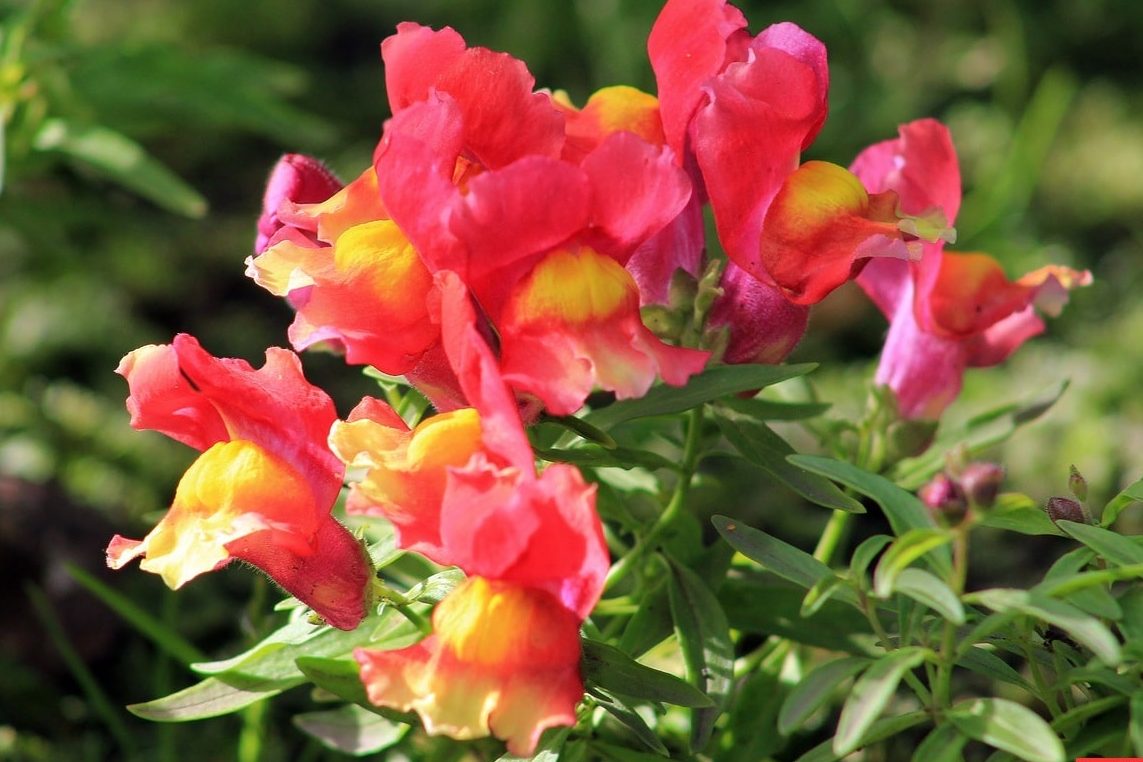
Flower growers recommend watering the dragon flower soil in containers daily and leaving them open for 30 minutes to ventilate and remove accumulated condensation.
The temperature in the room where the boxes with future seedlings are located should be about 25 degrees Celsius.
After the first shoots appear, the ventilation time should be increased, and after a week the film or glass should be removed altogether.
Seedling Care
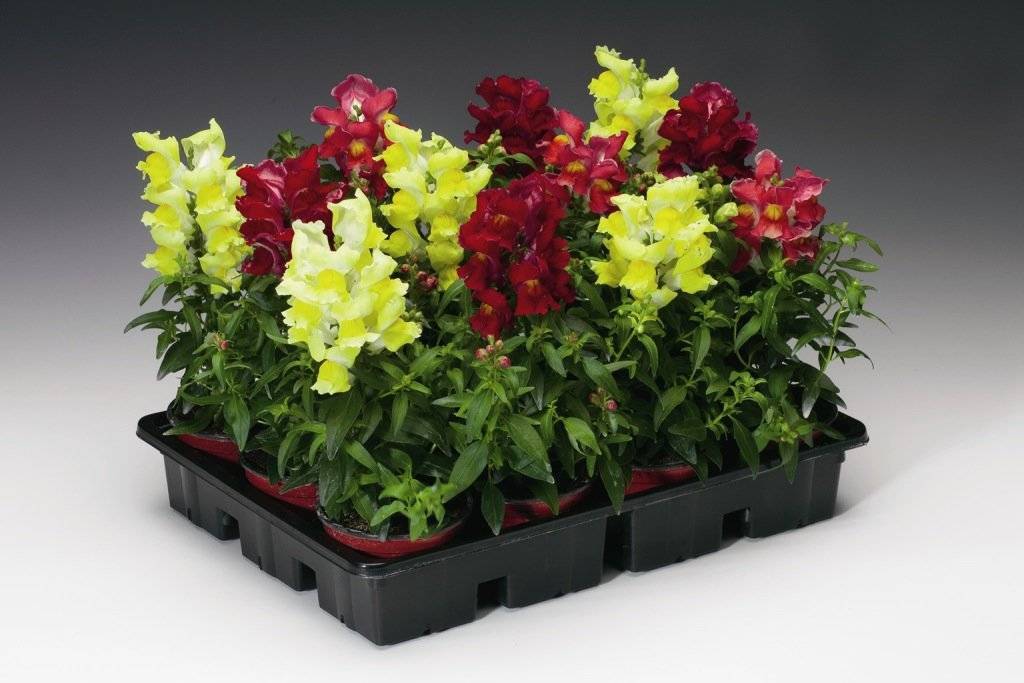
The first 2 weeks after germination, the dragon flower seedlings will grow very slowly – they are simply gaining strength. For the proper development of the plant, it is vital to follow the basic caring rules. The main measures are regular watering, warmth, and sunlight.
Watering should be moderate, otherwise, mold may appear in the containers, which will kill the sprouts. When a black leg appears on a seedling, it should be removed immediately using tweezers.
When a small seedling has 2-3 true leaves in addition to the cotyledons, you can start planting it in another container. Snap dragon flowers love space for the root system, so it is permissible to place the babies in small containers of 1-2 pieces.
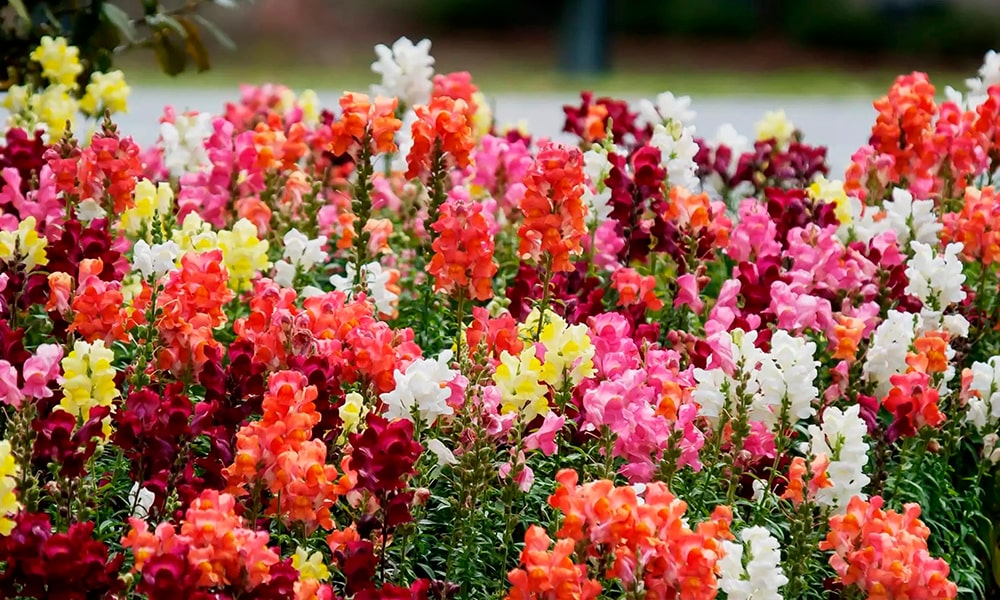
Growing seedlings should be in a well-lit place. In April, when consistently warm weather sets in, you can begin to harden off the seedlings. To do this, containers can be taken out onto the balcony or outside, first for 1-2 hours, gradually increasing the hardening interval by 8-10 hours.
When the seedlings already have 4-5 healthy leaves, it is advisable to pinch the central shoot, which will later help the bush to produce additional sprouts.
With the onset of consistently warm and sunny weather, the little “lion cubs” can be moved to open soil or flower boxes on the balcony. It is advisable to support the seedlings with high-quality soil drainage, as well as protect them from the wind.
The most suitable soil for lush flowering bushes is a mixture of approximately equal parts of compost, sand, and peat soil. By mixing them, the gardener receives a nutritious and fairly light soil.
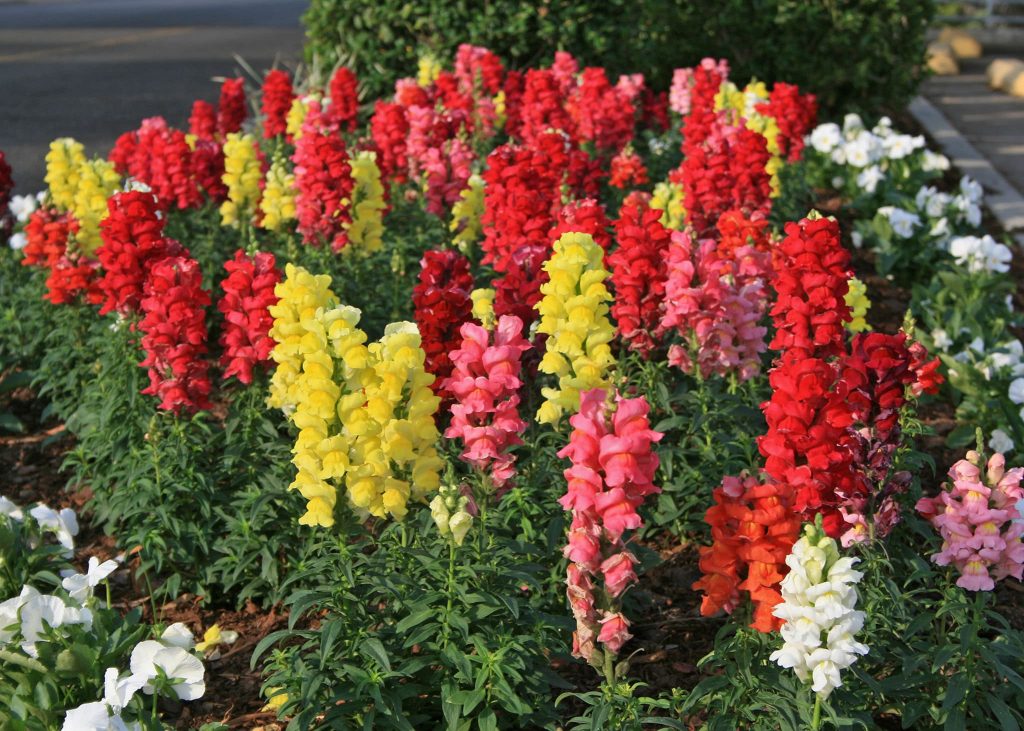
Before transplanting the seedlings, the soil should be well-moistened. Already 4 – 5 days after rooting, the seedlings begin to actively grow. Usually, transplantation does not cause difficulties, the only condition is that tall types of dragon flowers should be planted at a distance of 45 – 50 cm from each other, varieties of medium height – about 30 cm, and low-growing and dwarf varieties – about 15-20 cm. Other care features
Despite their elegance and visual fragility, the snap dragon flowers are low-maintenance and persistent flowers and require the simplest and most common actions to care for other garden pets.
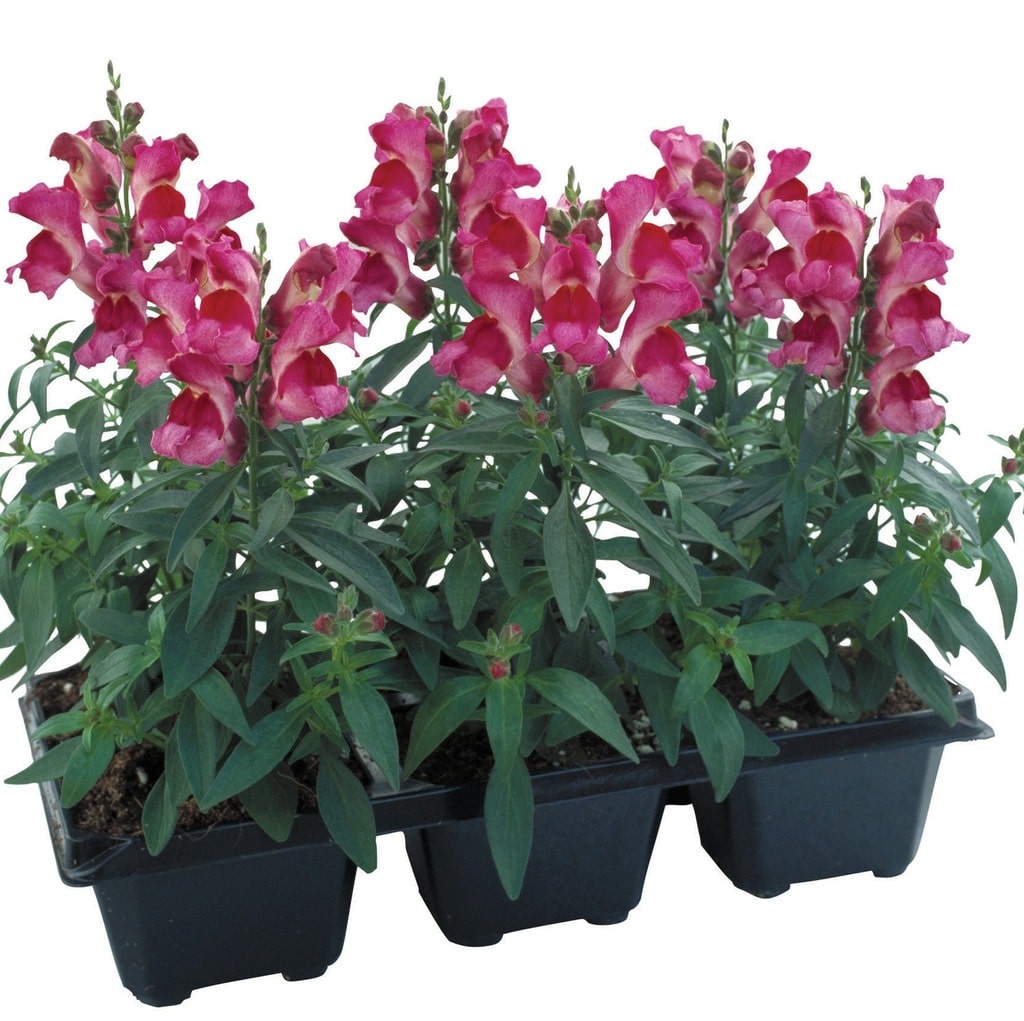
Regular watering (preferably with warm, settled water from a barrel), loosening the soil, eliminating weeds, and fertilizing are the keys to abundant flowering of this type of flower. Many tall varieties of flowering beauty require additional support and garter.
Diseases and Pests
In general, flowering bushes are resistant to diseases and pests. But there are situations, in particular, improper care, unsuitable neighbors, or excessive moisture when the snap dragon flowers are affected by the disease. Among them are blackleg, rotting of the root system, septoria, and gray rot.
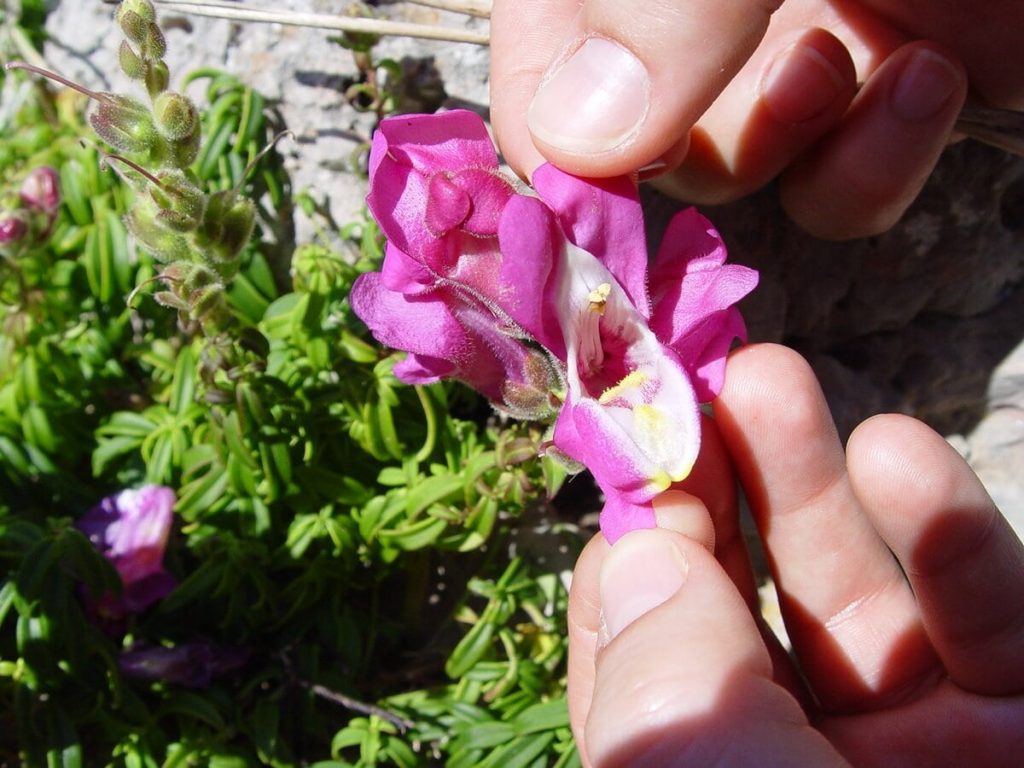
If individual plants in a garden bed have been affected by one of the possible diseases, they must be urgently removed from the site and burned. If possible, treat the soil with a fungicide.
Among the living garden pests that can infect a flower are butterflies that lay eggs on inflorescences, scale insects, various fly larvae, or caterpillars.
Dragon Flowers In Landscape Design
Dragon flowers add a slight touch of nostalgia for Grandma’s flower garden. However, they cannot be called old-fashioned plants.
New hybrid varieties of these flowers are very stylish and original. Plants look great together without dilution with other colors, they just need to be planted according to their growth and riot of colors.
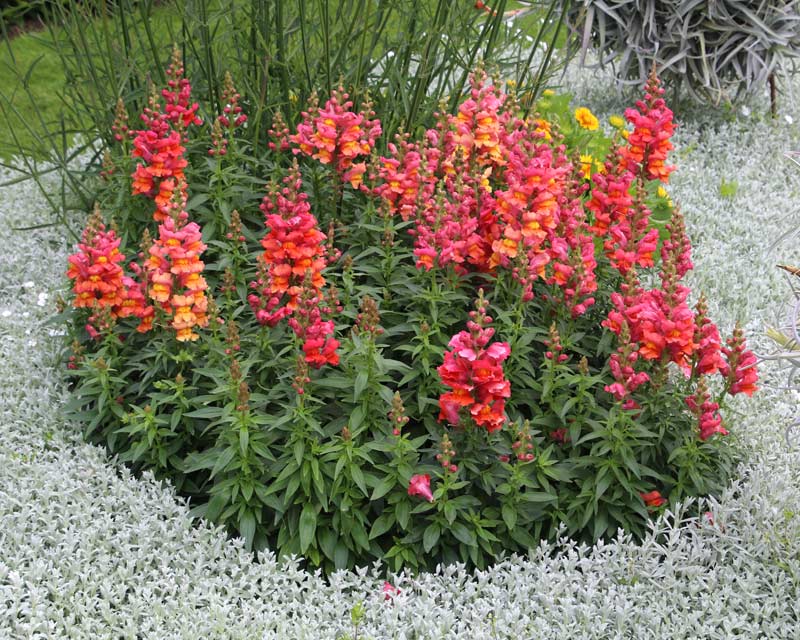
The best neighbors of this garden beauty can be other annuals, for example:
- Colorful asters;
- Cosmos;
- Chrysanthemums ;
- Carnations.
Snap dragon flowers will almost always find a worthy place in any floral ensemble and garden design. This is both the favorite soloist of many flower growers and a noble partner of other flowering crops.
The Most Popular Varieties
There are several classifications of dragon flowers, which depend on:
- plant height;
- flower structure shapes (double, single) and inflorescence shade;
- leaf shapes and colors.
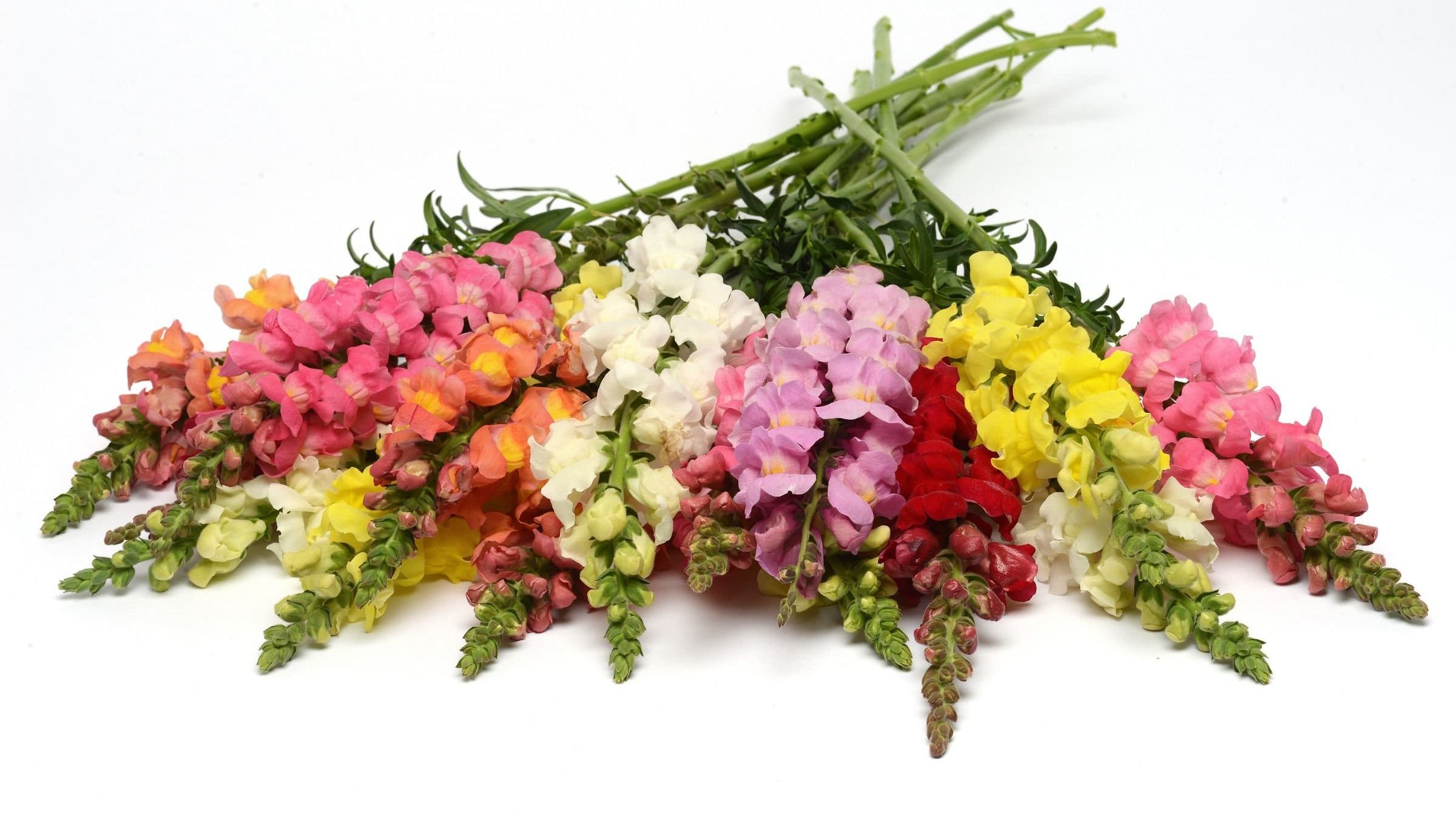
- Tall antirrhinums are best suited for cutting. The most beautiful and popular varieties are: “Rocket”, “Rocket Golden”, “Madam Butterfly”, “Tip Top”, and “Velvet Giant”.
- Medium plant varieties are profusely flowering and compact. The best varieties are “Black Prince”, “Coronette”, “Defiance”, and “Red Chief”.
- Low-growing snap dragon flowers are distinguished by a large number of shoots and early flowering. Spectacular and bright varieties – “Crimson Velvet”, “Crown”, “Schneeflocke”.
- Dwarf varieties are compact and dense bushes that ideally decorate alpine hills and add unique beauty to balcony flower beds. Dwarf varieties – “Tom-Tumb”, “Floral”, “Hobbit”.

Conclusion
If you want to make a fun, bright flower bed in your garden, pay attention to plants such as dragon flowers. Any flower bed, or ordinary border in the garden will be transformed with the help of these beauties. From July until frost arrives, they will delight others with their original and unusual inflorescences.

